To help you celebrate National Crochet Month, I am sharing a technique to help advance your crochet skills, and including a free pattern. Today I am sharing how to work Short Rows, in both traditional and Tunisian Crochet.
First, I would like to thank Crochetville for including me in they blog tour for this month long celebration. Everyday you are introduced to a new designer, or hobbyist or teacher, to help inspire a new desire of crochet within you. Don’t miss a day, check out the participants here.
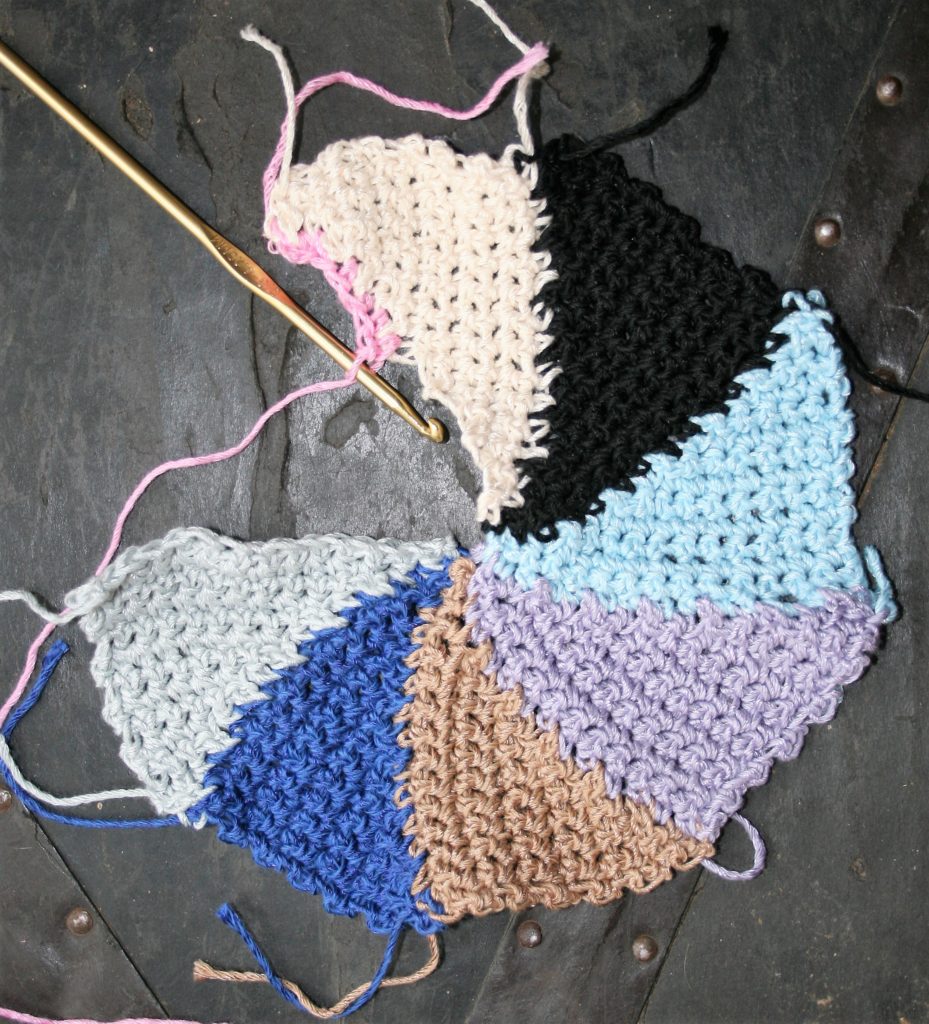
There are some terms that can be a bit intimidating the fiber arts, short rows can be one of them. However, they really are quite straight forward.
What Makes it Special
Learning how to work short rows in crochet will help expand crochet skills by adding subtle shaping in garments and the ability to create dramatic effects in just about any work you wish.
A short row is exactly as it sounds, you work your row short. Meaning you do not finish the row.
Sometimes this is worked by tapering the stitch height, by working shorter and shorter stitches until they are near a slip stitch. The work is turned, and possibly started by tapering the stich height upward, it is completed.
Working As A Dart
In the case of using short rows as is seen in sewing as if a dart, or a point in fabric, you work un-worked stitches. The next row works to the point where two rows below the row was worked short, then it continues to the remained of the stitches not worked three rows below.
Making A Wedge…
In the case of making a triangular shape, a multiple of short rows are worked, so that there are fewer stiches in each row. I often use this approach in creating shawls, essentially creating triangular wedges that I then build atop one another.
It is this last approach that I also use to create washcloths and potholders. I create “wedges” of triangles that work on one another to eventually create a circle.
Starting Your Circle
Using any yarn, with a comparable size hook, these patterns are great for scrap yarns. You can adjust the size by adjusting the number of beginning chains as the foundation. Just remember that this is only half the size of the finished product, and you will remove one stitch per row on the same edge of the fabric. It can be used utilizing either traditional crochet or Tunisian, and I share a quick pattern for both below.
Short Row Washcloth/Potholder
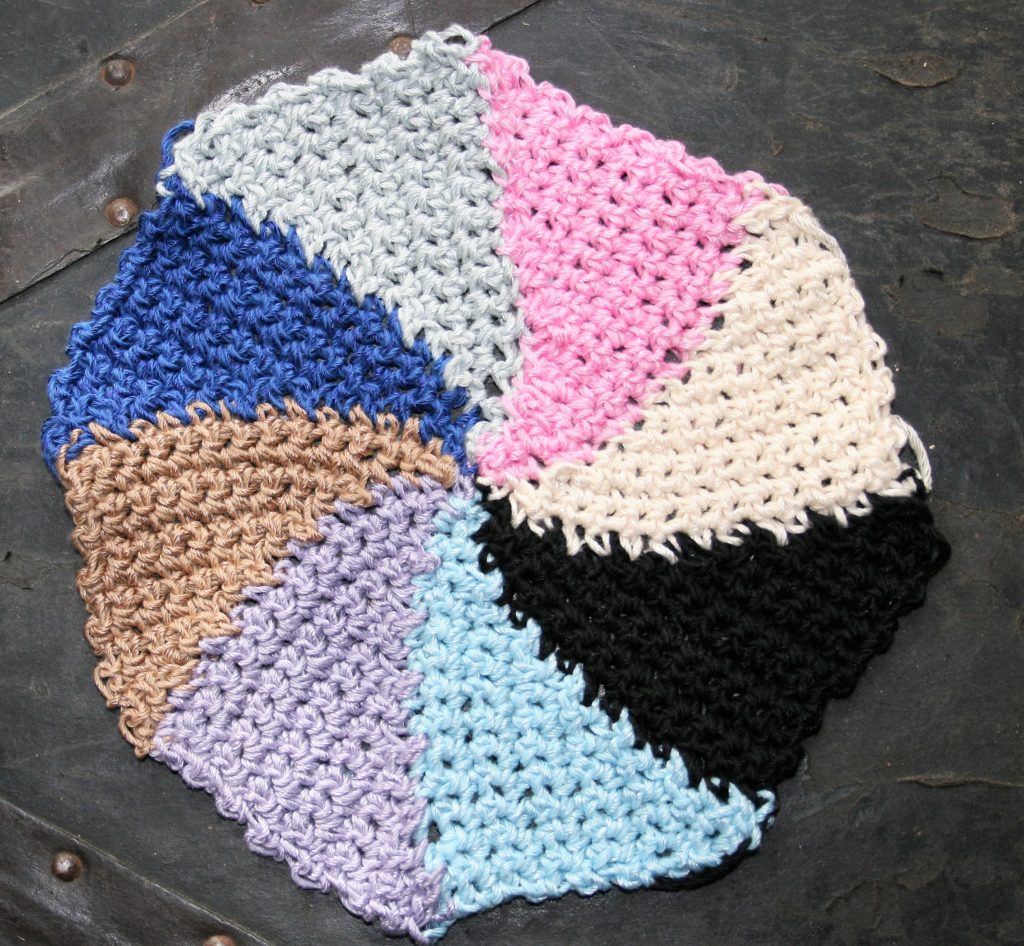
First Wedge
Row 1: Ch 16, sc in 2nd ch from hook, sc in each ch across, turn. -15 sc
Row 2: Sl st in same st, sl st in next st, ch 1, sc in same st, sc in each st across, turn. -14 sc
Row 3: Ch 1, sc in same st, sc in next 12 sts, leaving last st unworked, turn. -13sc
Row 4: Sl st in same st, sl st in next st, ch 1, sc in same st, sc in each st across, turn. -12 sc
You Should Start Seeing the “Stair Stepping”
Row 5: Ch 1, sc in same st, sc in next 10 sts, leaving last st unworked, turn. -11sc
Row 6: Sl st in same st, sl st in next st, ch 1, sc in same st, sc in each st across, turn. -10 sc
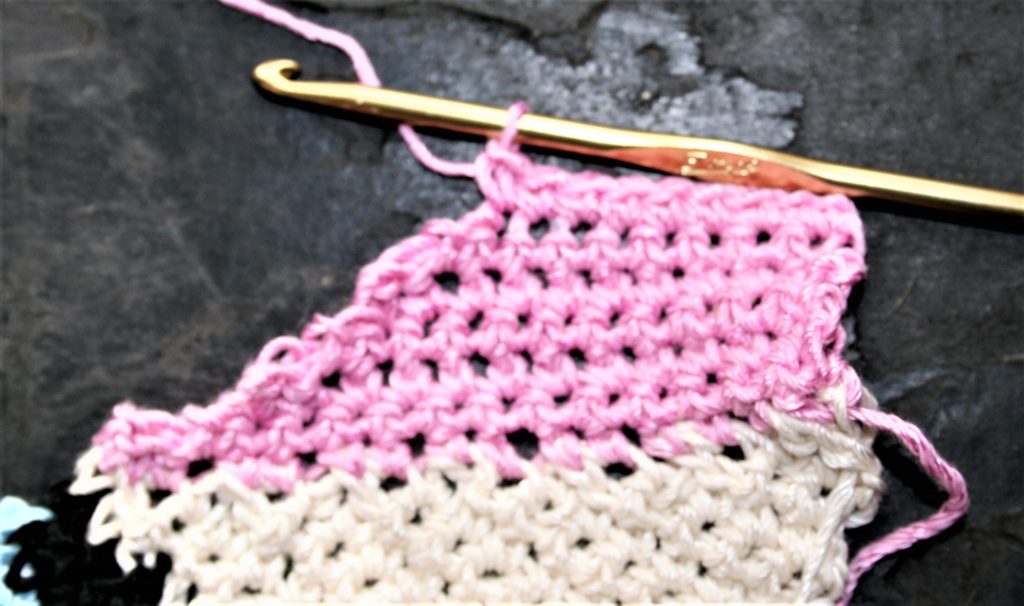
Row 7: Ch 1, sc in same st, sc in next 8 sts, leaving last st unworked, turn. -9sc
Row 8: Sl st in same st, sl st in next st, ch 1, sc in same st, sc in each st across, turn. -8 sc
Over Halfway on the First Wedge….
Row 9: Ch 1, sc in same st, sc in next 6 sts, leaving last st unworked, turn. -7sc
Row 10: Sl st in same st, sl st in next st, ch 1, sc in same st, sc in each st across, turn. -6 sc
Row 11: Ch 1, sc in same st, sc in next 4 sts, leaving last st unworked, turn. -5sc
Row 12: Sl st in same st, sl st in next st, ch 1, sc in same st, sc in each st across, turn. -4 sc
Almost There…
Row 13: Ch 1, sc in same st, sc in next 2 sts, leaving last st unworked, turn. -3sc
Row 14: Sl st in same st, sl st in next st, ch 1, sc in same st, sc in each st across, turn. -2 sc
Row 15: Ch 1, sc in same st, turn. -1 sc
Row 16: Sl st in same st, turn.
Second Wedge
Row 17: Ch 1, sc in same st, sc in the edge stitch of Rows 15-1 (essentially either the stitch skipped in a row, or the slip stitch after the row is turned), turn. -15 sc
Row 18-32: Rep Rows 2 through 16 of wedge 1.
Wedges 3-8
Repeat Second Wedge.
Seam Wedge 1 to Wedge 8.
Tunisian Short Row Washcloth/Potholder
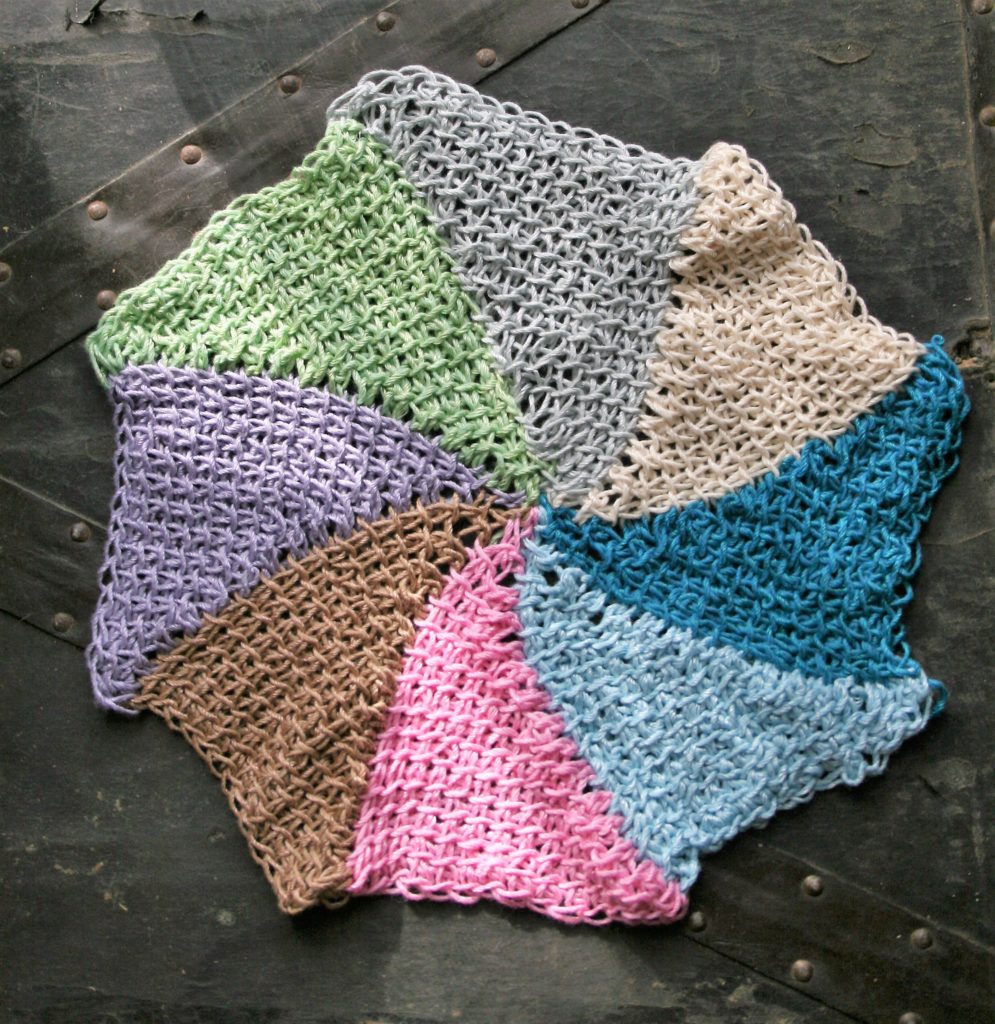
These same principals apply to Tunisian crochet as well.
First Wedge
Row 1: Ch 15, pick up loops in each ch across. RP. -15 sts
Row 2: Tss in next 13 sts, leaving last st unworked. RP. -14 tss
Row 3: Tss in next 12 sts, leaving last st unworked. RP. -13 tss
Row 4: Tss in next 11 sts, leaving last st unworked. RP. -12 tss
Still not working the last stitch…
Row 5: Tss in next 10 sts, leaving last st unworked. RP. -11 tss
Row 6: Tss in next 9 sts, leaving last st unworked. RP. -10 tss
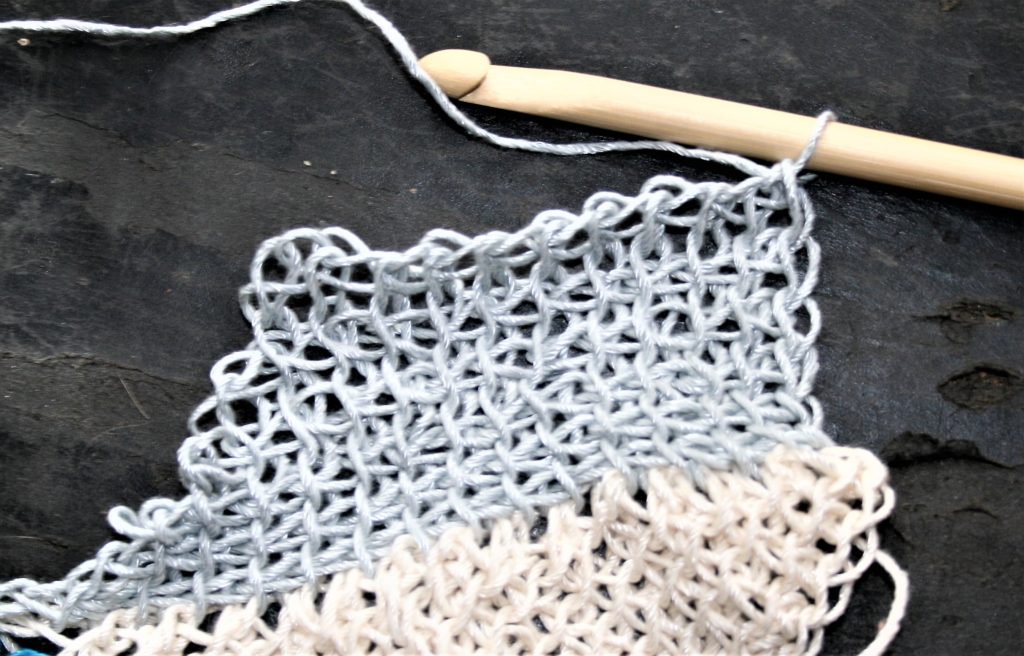
Row 7: Tss in next 8 sts, leaving last st unworked. RP. -9 tss
Row 8: Tss in next 7 sts, leaving last st unworked. RP. -8 tss
Are you seeing the angle?
Row 9: Tss in next 6 sts, leaving last st unworked. RP. -7 tss
Row 10: Tss in next 5 sts, leaving last st unworked. RP. -6 tss
Row 11: Tss in next 4 sts, leaving last st unworked. RP. -5 tss
Row 12: Tss in next 3 sts, leaving last st unworked. RP. -4 tss
Almost finished the first wedge…
Row 13: Tss in next 2 sts, leaving last st unworked. RP. -3 tss
Row 14: Tss in next 1 st, leaving last st unworked. RP. -2 tss
Row 15: Tss in same st, leaving last st unworked. RP. -1 tss
Second Wedge
Row 16: Pick up loops in each unworked stitch of rows below. RP.-15tss
Row 17-30: Rep Rows 2-15 of wedge 1.
Wedges 3-8
Repeat Second Wedge.
Seam Wedge 1 to Wedge 8.

Thank you, Linda for sharing this pattern! I am excited to try it out and see how far i can “push” it beyond a washcloth or potholder! 😉
Blessings!
You’re welcome! I am glad I can help you expand your skills. Enjoy.